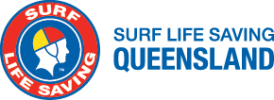INTRODUCTION
It is a requirement under the Work Health and Safety Act 2011 that Safety Data Sheets (SDS) must be compiled and displayed where hazardous substances are used or located in clubhouses, gear sheds, first aid training rooms, etc.
| Part 7.1 (Hazardous Chemicals) of the Work Health and Safety Regulation 2011 sets the requirement of an Employer to: • Obtain a SDS of a hazardous substance from the supplier; • Keep a register containing a list of all hazardous substances used at the workplace and put a copy of any SDS obtained in the register; • Take reasonable steps to ensure the SDS is not changed other than by the manufacturer or importer • Keep the SDS close to where the substance is being used. |
What is an SDS? An SDS is a document prepared by the manufacturer of a hazardous substance. An SDS describes the properties and uses of a particular hazardous substance. There are details in the SDS on the identity of the substance, chemical and physical properties, health hazard information, and precautions for use and safe handling information.
Why do we need an SDS? There are tens of thousands of chemicals used in workplaces, ranging from hazardous fumes to cleaning agents. To assess the risks to health that these chemicals may pose we need information on the hazardous nature of the chemical substance. A SDS is designed to provide this information. Without a SDS the user could remain ignorant of the hazardous nature of the substance, how it could affect their health or safety and what to do in case of an emergency.
There is a legal obligation to obtain a SDS on or before the first supply of the hazardous chemical. This SDS must be made readily available to all persons that use the substance or have reasonable need for requesting the information.
What SDS signage is required? Surf Life Saving Clubs are required to display the following Safety Data Sheets as a minimum:
- Regular unleaded petrol;
- Medical air (oxygen);
- Outboard oil;
- Automotive diesel fuel (where applicable);
- Formaldehyde (where applicable);
- Microshield hand rub (where applicable);
- Liquid bleach;
- Sunscreen
- Any other chemical defined as Hazardous by the NOHSC Standards



Post your comment on this topic.